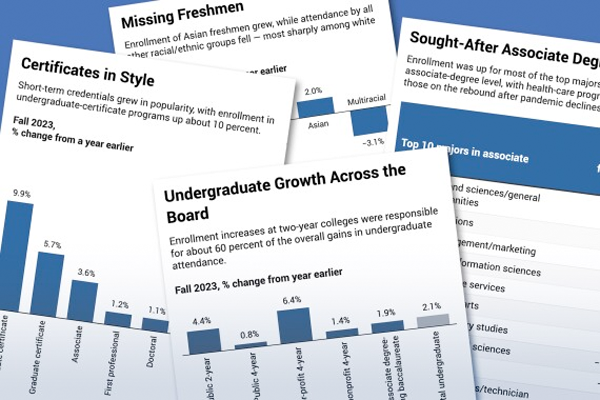
Excerpt from the Chronicle of Higher Education
The latest enrollment data from the National Student Clearinghouse Research Center provides an early sign of a long-awaited turnaround in college attendance: Undergraduate enrollment was up for the first time since the Covid-19 pandemic began.
The preliminary data, released Thursday, reveal that undergraduate enrollment across all types of institutions rose 2.1 percent in the fall of 2023 compared with the same time last fall. This fall’s increase in undergraduate enrollment — an additional 160,000 students — was fueled largely by community colleges, where attendance was up 4.4 percent from a year earlier. For-profit institutions saw the highest undergraduate growth rate of 6.4 percent, but they represent a small slice of the overall students reflected in the data, or just 2.4 percent.
Another driver of undergraduate-enrollment growth was historically Black colleges and universities, where attendance was up 6.1 percent from a year earlier, according to the center’s report on the data. In recent months, individual HBCUs have reported jumps in enrollment, including North Carolina A&T State University, Grambling State University, and Coppin State University.
Undergraduate enrollment was up for Black, Asian, and Latino/a students this fall, but down for white, international, and Native American students.
Despite the generally good news for the sector, there was also a troubling sign: While overall undergraduate growth was up, freshman attendance declined. In a reversal of last fall’s gains, freshman enrollment fell 3.6 percent this fall. Those drops were concentrated in public and private four-year institutions, where freshman enrollment dipped 6.1 percent and 4 percent, respectively, from a year earlier.
“It’s hard to know what’s really driving this divergence between freshmen and continuing students,” said Douglas Shapiro, the center’s executive director, in a call with reporters. “It’s certainly counterintuitive.”

